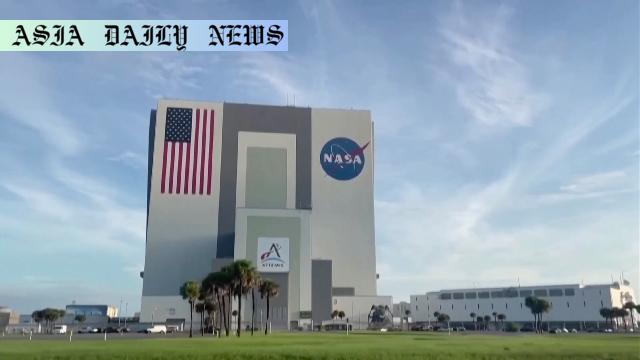NASA Workforce faces mass resignation as over 20% of employees, totaling nearly 4,000, opt to leave amidst deep budget cuts.
Key Point 1: Over 20% of NASA employees, around 4,000, have chosen to resign.
Key Point 2: The resignation wave follows budget cuts under the Trump administration.
Key Point 3: NASA faces a 24% year-on-year budget reduction starting October.
Key Point 4: Employees express concern through the ‘Voyager Declaration.’

Mass Resignation at NASA Following Budget Cuts
NASA, a world-renowned agency instrumental in space exploration and research, faces a significant workforce challenge. Reports indicate that over 20% of NASA’s employees, totaling around 4,000 individuals, have applied for resignation under a program launched by the Trump administration. This unexpected response aligns with broader efforts to reduce federal spending, resulting in an alarming situation for the agency’s operations and future endeavors.
Impact of a 24% Reduction in NASA’s Budget
The proposed 24% year-on-year reduction in NASA’s budget for the fiscal year starting in October has sent ripples through the organization. The cuts are part of a broader initiative outlined by the Trump administration to curb federal expenditures. While cost-cutting measures are often implemented to streamline operations, the scale of these reductions risks undermining NASA’s primary mission: to explore space and foster technological innovation for humanity’s betterment.
Workforce Sentiment and the Voyager Declaration
With weakened morale, current and former NASA employees have begun voicing their concerns. A group of 360 individuals even drafted an open letter titled ‘The Voyager Declaration.’ This letter highlighted the destabilizing effects of rapid and wasteful organizational changes, emphasizing challenges such as mission disruption and workplace dissatisfaction. These employees also criticized the proposed budget cuts, warning that reduced funding could compromise groundbreaking projects and research.
Future Implications of Workforce Exodus
The decision of nearly 4,000 employees to leave reflects more than just discontent; it illustrates the precarious future of the U.S. space agency. A 20% reduction in workforce not only impacts daily operations but also threatens to delay critical missions. NASA plays a vital role in advancing scientific knowledge and maintaining the U.S. as a global leader in space exploration. A diminished workforce could hinder these goals and compromise long-term objectives.
Broader Discussion: Federal Spending vs. Essential Projects
This situation raises an important debate about balancing federal budgets against supporting crucial initiatives. While financial prudence remains a priority for governance, departments like NASA require adequate resources to push the boundaries of scientific exploration and technological advancements. Thus, the need for visionary leadership that understands the strategic importance of space programs cannot be overstated. Compromising such initiatives could have consequences that ripple through science, technology, and global diplomacy.
Conclusion: A Critical Time for NASA
NASA’s current predicament serves as a cautionary tale for policymakers and stakeholders. A thriving NASA directly contributes to the U.S.’ innovation ecosystem, economic prosperity, and scientific leadership. As more employees step away due to budgetary constraints, finding a sustainable solution to restore confidence and stability within the agency is imperative. The time to act is now to ensure that the missions of tomorrow are not jeopardized by challenges faced today.



Commentary
NASA’s Challenges Reflect Broader Issues
NASA’s workforce departure highlights a more profound issue within the realm of public sector management. While budgetary constraints and financial accountability are necessary for any government entity, initiatives with long-term implications, such as those pursued by NASA, demand a different approach. It is concerning to see talented individuals opt to leave, as organizations like NASA depend on their expertise for significant advancements in science and exploration.
Balancing Financial Cuts and Scientific Innovation
The scale of the proposed 24% budget cut is daunting. While every government needs to assess its financial priorities, certain sectors require strategic investment rather than reductions. Space exploration is not only about discovering new frontiers but also about fostering innovations that fuel the economy and strengthen national security. The Trump administration’s move might reflect short-term fiscal tightening, but it risks jeopardizing the long-term benefits of NASA’s endeavors.
A Call for Support and Sustainable Solutions
The ‘Voyager Declaration’ penned by former and current NASA employees is an emotional and rational appeal against drastic decisions. Policymakers must listen to such voices and find a balanced route forward. Perhaps reallocating resources or forging public-private partnerships can aid NASA in overcoming current challenges. The agency’s ability to carry forward its mission is crucial for not just the U.S., but for the global scientific community.
Final Thoughts
Ultimately, NASA holds an iconic place in human advancement. Protecting its workforce, enabling its projects, and ensuring its sustainability should be at the forefront of any government’s agenda. While financial discipline is important, weakening institutions like NASA compromises a nation’s edge in science and technology, risking opportunities for future generations.